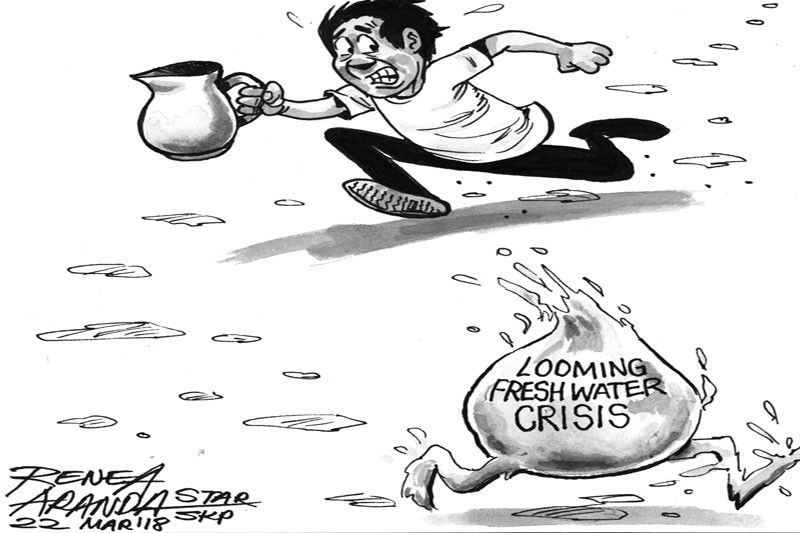EDITORIAL - Nature for water

While the nation is focused on the impact on tourism of fecal contamination from improper sewage disposal in Boracay, millions of Filipinos across the country face health risks due to the lack of access to safe drinking water.
Pollution, poor water management and climate change are shrinking safe water sources as water consumption continues to rise from the growing global population and increased demand from agriculture and industries.
According to the 2018 United Nations World Water Development Report prepared by UNESCO, around 1.9 billion people currently live in areas at risk of severe water scarcity, with the figure expected to hit 3 billion by 2050. The report also estimates that 1.8 billion people around the world use unimproved sources of drinking water, which lack protection from fecal contamination.
Apart from endangering safe water sources, pollution, soil erosion from croplands and other forms of environmental neglect have aggravated flooding in many parts of the planet. Rising temperatures due to global warming further raise the risks. A study undertaken by HSBC ranked the Philippines third globally after India and Pakistan in vulnerability to climate change.
The UN stresses that the risks can be reduced and safe water sources boosted. World Water Day is observed today with the theme “nature for water.” The UN is encouraging the implementation of nature-based solutions or green infrastructure. These include creating vegetation buffers along waterways as well as the restoration of forests, grasslands and natural wetlands.
Some progress has been achieved in the Philippines, such as in the successful preservation of the Las Piñas-Parañaque Critical Habitat and Ecotourism wetland park. But there is a continuing battle between environmental advocates and commercial developers who want to reclaim large portions of wetlands, bays, coastal marshes and mangrove areas.
Another nature-based solution is the reconnection of rivers and lakes to floodplains. At this point, only a powerful earthquake may clear the natural floodplains of Metro Manila and surrounding areas of manmade infrastructure. But the reconnections are still possible in other parts of the country.
Some countries have started using permeable pavements and encouraged the use of green roofs and facilities for water harvesting. Minimizing floods, preventing droughts and stopping water pollution are all worthy goals, and many solutions are right there in nature.
- Latest
- Trending



























